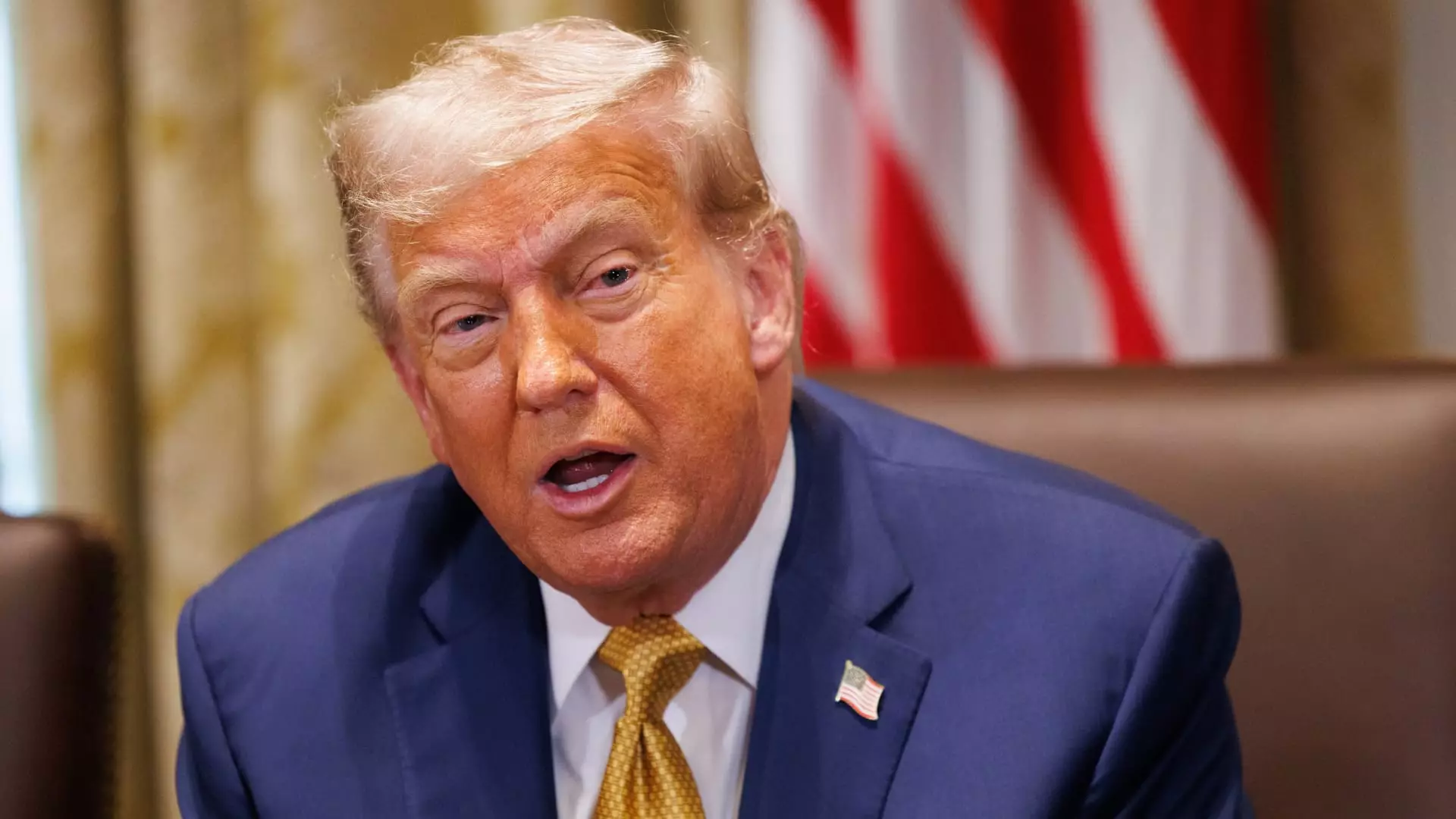In recent declarations, President Donald Trump has once again grasped at the idea that slapping tariffs on imports, particularly pharmaceuticals, could serve as a catalyst for revitalizing American manufacturing. While this notion might sound appealing in the abstract—protecting domestic jobs, fostering innovation, and reducing reliance on foreign supply chains—the reality is far more complex and potentially damaging. Tariffs at proposed levels of 200% may seem like an aggressive push to stimulate onshore drug production, but the underlying implications reveal a reckless misunderstanding of global supply dynamics and economic interdependence.
American industry, especially sophisticated sectors like pharmaceuticals, thrives not by erecting barriers but through fostering innovation, investment, and a predictable business environment. Imposing such punitive tariffs risks escalating trade tensions, spurring retaliatory measures, and sparking a destructive spiral that ultimately harms consumers and the economy. The belief that tariffs alone will turn the U.S. into a manufacturing powerhouse overlooks the critical realities of globalized production—these industries rely on complex supply chains spanning multiple countries. Disrupting these chains with tariffs could lead to shortages, higher drug costs, and diminished quality control, all in the name of achieving a superficial sense of national self-sufficiency.
The Political Rhetoric Concealing Economic Reality
Trump’s repeated threats to impose steep tariffs seem to be driven more by political posturing than sound economic strategy. The promise of “very soon” implementing tariffs at 200% seems to serve as a rhetorical tool aimed at garnering nationalist applause rather than delivering tangible policy. Moreover, the indefinite waiting period—”about a year, year and a half”—suggests a lack of real legislative or diplomatic backbone, revealing that such threats are more about appeasing certain political bases than about crafting effective trade policy.
This approach presents a dangerous game, as industries and markets are left in a state of uncertainty. Pharmaceutical giants and investors are watching nervously, often opting to delay long-term investments amid the ambiguity. The warning signs are clear: tariffs could be used as leverage in broader trade negotiations, but they also risk undermining the U.S.’s reputation as a reliable partner. The administration’s inconsistent signals hinder the very vision of technological leadership and global competitiveness it claims to promote.
The Industry’s Resistance and the Reality of U.S. Drug Manufacturing
Big Pharma and its allies have voiced strong opposition to the proposed tariffs, emphasizing that such measures could backfire spectacularly. They argue that tariffs are not just a simple trade barrier—they are a direct threat to the research and development investments crucial for medical advancements. The call for tariffs to relocate manufacturing to the U.S. ignores the fact that much of the global drug supply chain is already localized to some extent—high costs, regulatory hurdles, and complex logistics make onshoring not only challenging but potentially infeasible.
Furthermore, the industry’s recent investments in U.S.-based manufacturing, seen as a response to global pressures, are driven by strategic considerations, not tariffs. The notion that tariffs will suddenly turn American pharmaceutical production into a thriving industry is naïve; it risks reducing the country’s standing as a leader in biotech and innovation by introducing policies that may increase costs and reduce competitiveness. The supposed benefit—a stronger domestic industry—risks being overshadowed by the disruptions that tariffs inevitably bring.
Debunking the Idea that Tariffs Are the Solution to Manufacturing Decline
This political rhetoric hinges on the flawed premise that tariffs are a cure-all for America’s manufacturing woes. History shows that protectionist policies rarely foster sustainable growth; instead, they often provoke retaliation, inflate costs, and create economic inefficiencies. The debate over tariffs on pharmaceuticals does not exist in a vacuum—it intersects with broader issues of trade policy, innovation, and global economic health.
True revitalization comes from investment in infrastructure, skilled workforce development, tax incentives, and maintaining a predictable, open environment conducive to innovation. Relying on tariffs as a blunt tool to force industries into reshoring is shortsighted, risking long-term damage rather than offering a genuine pathway to economic resilience. The dynamic nature of technological advancement and international collaboration cannot be subdued by high tariffs alone.
President Trump’s fixation on forcing companies to bring manufacturing home at the risk of higher consumer costs and disrupted supply chains demonstrates a fundamental misunderstanding of how modern economies function. While the rhetoric of restoring American manufacturing might resonate emotionally, it overlooks the nuanced reality—that the real strength of a nation lies in its ability to leverage global capabilities, not retreat from them. Imposing unfeasible tariffs on pharmaceuticals under the guise of national security only perpetuates a misguided approach that could ultimately diminish America’s standing in the global market.

